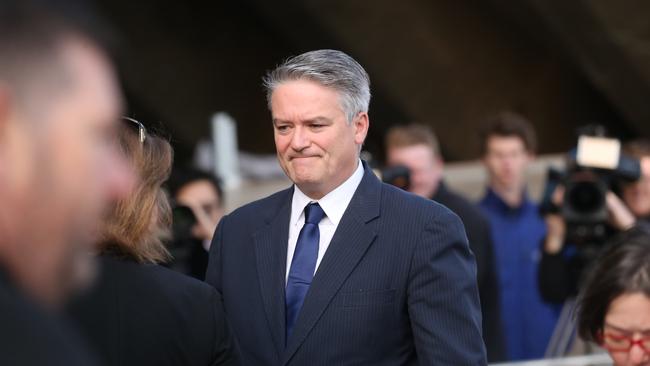State and federal budgets ‘moderately expansionary’, OECD warns
Jim Chalmers and the states should tighten their fiscal purse strings, the Paris-based OECD has said, after concluding that the nation’s budgets were ‘moderately expansionary’.

Australia’s budget settings are described as “moderately expansionary” and contributing to inflation, according to the OECD, which has called on Jim Chalmers and state premiers to tighten the nation’s fiscal purse strings.
The declaration from the Paris-based Organisation for Economic Co-operation and Development comes after government spending rose to a record share of the economy in the September quarter, a trend economists warned risked keeping interest rates higher for longer.
“The widening of the fiscal deficit this year has helped sustain domestic demand in the context of weak private consumption and investment,” the OECD’s latest economic outlook reads.
“But a degree of consolidation is warranted in the medium term, given the ageing-related fiscal pressures on the horizon and the benefits of maintaining fiscal buffers.”
While the Treasurer had argued that the recent boom in government spending had stopped the economy from contracting, and pinned the recent rise in expenditure on big-spending state governments, the OECD instead attributed the increase to the commonwealth.
“The loosening of fiscal policy this year largely reflects cost-of-living support from the federal government, mainly via income tax cuts and extended energy payment assistance,” the report reads.
It regarded Australia’s fiscal settings as “moderately expansionary” at present and would continue to add to demand in 2025. However, the OECD anticipated a “small tightening” in 2026 which would leave the budget in a “broadly neutral” position.
Also contained in the OECD report was a material downgrade in its GDP growth projections for Australia. It now forecasts the Australian economy will expand by 1.1 per cent by year’s end, with growth accelerating to 1.9 per cent by the end of 2025.
That compares to the OECD’s May forecast of a 1.5 per cent growth rate in 2024, followed by a 2.2 per cent increase in 2025.
Further threatening to weigh on growth was the prospect of rising trade tensions, the report warned, as US president-elect Donald Trump vows to level an across-the-board 10 per cent tariff on Chinese imports in a move that could escalate trade tensions between the world’s two largest economies.
“Australia is particularly vulnerable to weakness in China’s economy, although this is a two-sided risk as Chinese policy stimulus could boost Australian exports by more than expected,” the report reads.
Similarly impeding Australia’s economic prospects would be a sharp cut in immigration, the report said, as the Coalition vows to slash the net overseas migration intake to just 160,000 in 2025-26 – 100,000 fewer than Labor’s planned level.
“An abrupt fall in immigration could both undermine consumption growth and add to labour shortages in some sectors, aggravating bottlenecks,” it states.
Against a backdrop of tepid growth, the OECD assumed the Reserve Bank would begin easing monetary policy in the new year, and expected 100 basis points worth of rate cuts by early 2026, taking the cash rate from its current level of 4.35 per cent to 3.35 per cent.
However, it warned that “unexpectedly stubborn” services inflation could delay interest rate relief, and when cuts did arrive, the pace of easing would be only “gradual”.
Inflation in the labour-intensive services sector accelerated to 4.8 per cent in the year to October, up from 4.4 per cent in September, with strong growth in insurance, education and rental costs contributing to the increase.








To join the conversation, please log in. Don't have an account? Register
Join the conversation, you are commenting as Logout